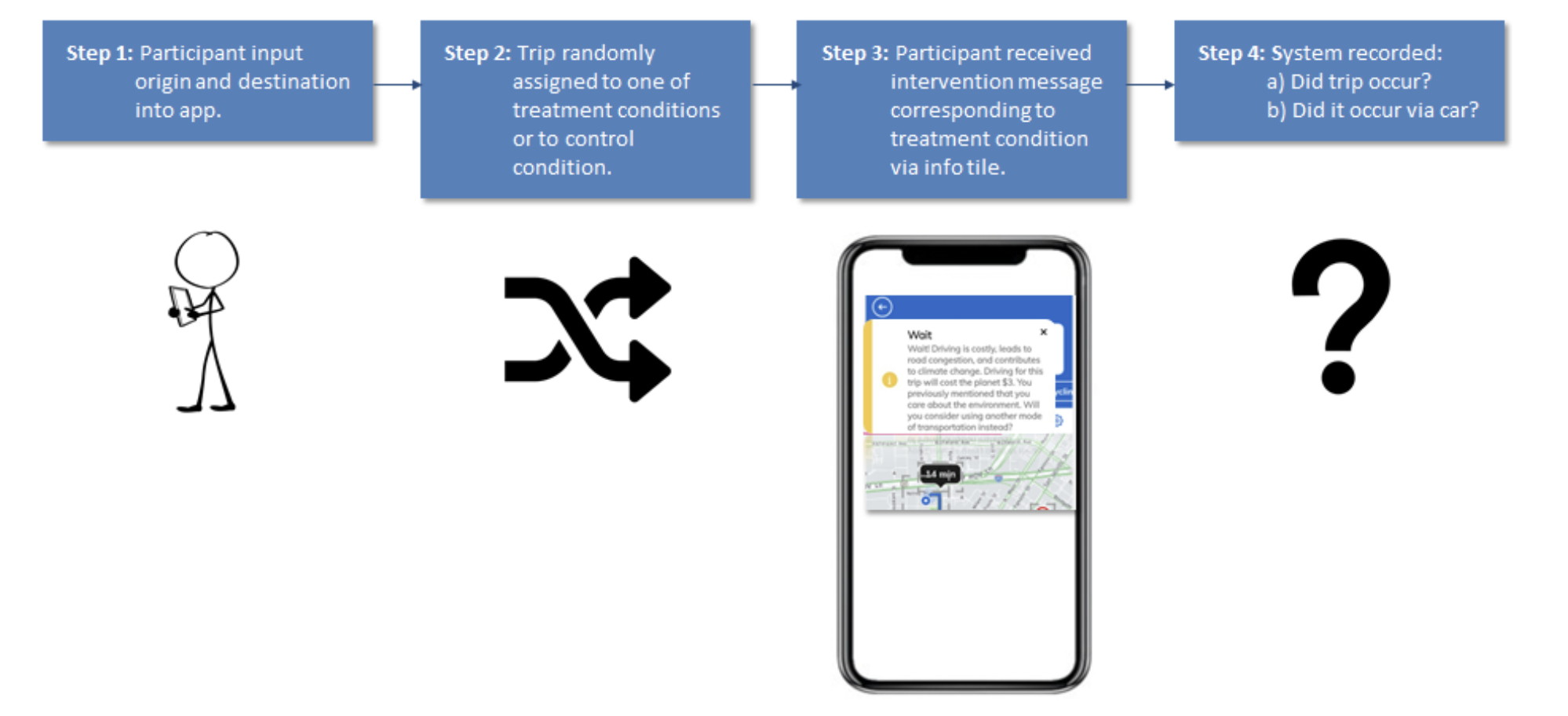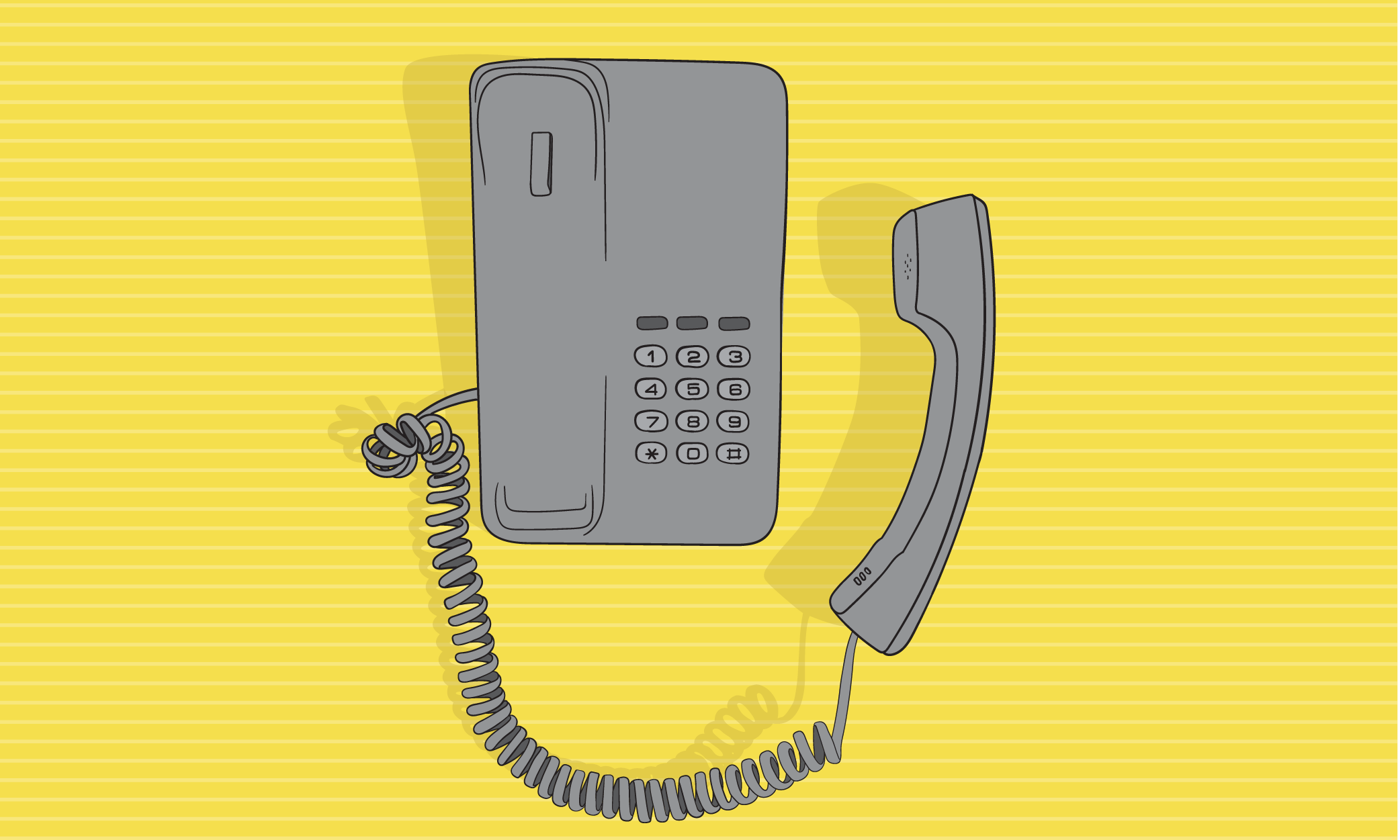Transportation
Incentivising active and shared travel in the San Francisco Bay Area
2024
PARTNERS
Metropolitan Transport Commission
Metropia
Share
The Behaviouralist worked with the Metropolitan Transport Commission (MTC) of the San Francisco Bay Area (SFBA) and Metropia – a travel-app company – to test the effectiveness of using nudges and incentives to shift the behaviour of SFBA residents towards using more sustainable transportation modes to reduce congestion and CO2 emissions. The project involved designing and running two experiments, which used randomised controlled trials (RCTs) to evaluate the effect of nine interventions aimed at changing travel behaviour, and extracting the insights of these studies into scaleable recommendations.
Researching existing travel patterns and understanding the enablers and barriers to each mode of transport
The initial questionnaire on SFBA residents’ travel behaviours revealed that although the Covid pandemic led to an increase in working-from-home (and therefore less commuting), people also began driving more and taking public transport less. Additionally, the survey identified the barriers that SFBA residents perceived with each transport option. Using private vehicles had the least barriers (with 57% of respondents experiencing no barriers). Carpooling was hindered by perceived unreliability, and ridesharing by perceived health risks and high cost. Dissatisfaction with comfort, safety and reliability hindered use of public transport, with 67% of respondents saying they were worried it presented a health risk. The main barrier to choosing active transport options such as cycling or walking was being unfamiliar with them.

The percentage of respondents that indicated each factor was the main barrier to taking a transport option, for each option.
The experiments were administered through the ‘GoEzy’ app
The project team conducted a Facebook advertising campaign within the region to recruit 216 participants between May 2022 and March 2023, enabling us to collect data from 7,443 driving trips. Metropia’s ‘Go Ezy’ travel app was the principal medium for delivering the interventions and gathering data on participants’ travel behaviour.
Experiment One - Testing the impact of informational nudges on transport mode choice
The first of the two experiments (Experiment 1), used a randomised controlled trial to test the impact of an in-app message-based intervention. 50% of participants were randomly allocated to the control group (where they received no message), and the other 50% were split between the four treatment groups; each group received a different message providing either a lower- or higher-bound estimate of the social cost of taking their planned journey by car ($1 or $3). In addition, two of the groups were reminded that they care about the environment, which they had stated as part of a questionnaire they filled out when they downloaded the GoEzy app.

A graphical representation of the design of Experiment 1.
Analysing the results of Experiment 1 revealed that:
- Providing the upper-bound estimate ($3) led to a decrease in the number of trips taken by car in the subsequent 24 hour period.
- The lower-bound estimate ($1) led to a small increase in the number of trips made by bike rather than by car, and the social cost messages also led to a minimal increase in trips taken by public transport.
- The green identity reminders had no significant effect on transport mode choice.
- The impact of informational nudges on behaviour was heterogeneous; “flexible travellers” (who used more than one travel mode during the first (observation only) week of the experiment) were 2.3 percentage points less likely to complete their trip by car after receiving the nudge, and 1.8 percentage points less likely to drive in the following 24 hours. Such effects were not found amongst non-flexible travellers. This indicates that people who have experience with non-driving transport modes can be nudged away from driving more easily than people who do not, highlighting the impact of familiarity on transport mode choice.
Experiment Two - Testing the impact of offering financial incentives to take alternative modes of transport
The second experiment (Experiment 2) tested the impact of offering users a financial incentive, in addition to informational nudges, to use non-driving transport modes to complete habitual trips (i.e. trips they took routinely, such as going to the supermarket, or picking up their children from school). These messages were sent an hour before a predicted trip and were tested through a randomised control trial with five treatment groups. The treatment varied by the alternative transport mode being suggested (walking; cycling; taking public transport; not driving; and the second-best option), and the value of the financial incentive being offered, which was selected at random between $1 and $6.

A graphical representation of the design of Experiment 2.
Some of the results from Experiment 2 are:
- Offering a $3 to $5 incentive was effective in encouraging participants to use intermodal transportation options (i.e. more than one transport mode during their journey), but did not lead to reduction in driving.
- Presenting the second-best option, as opposed to a random alternative, required a lower incentive to be effective, but on the whole there was not a linear relationship between the value of the incentive and its effectiveness in changing behaviour.
- Drivers were more nudgeable on weekdays than on weekends.
- The interventions were more effective at reducing driving amongst 37-56 year olds than amongst 57+ year olds.
- Residents of some counties (Contra Costa, San Francisco, and Santa Clara) were more responsive to interventions than residents from other counties.
- As in Experiment 1, those with experience using alternative modes of transport were more responsive to the interventions than those without such experience.
Changing travel behaviour is difficult, but some people are more ‘nudgeable’ than others
Using the GoEzy app to both deploy the interventions and track the travel behaviours of participants, provided a unique opportunity to measure the impact of interventions on behaviour change in a field experiment. In accordance with the existing literature, this project found that changing travel behaviour is not easy. Many journey types are routine, and for a number of reasons (including inertia and status quo bias), people rarely consider taking an alternative transport mode for those journeys. However, it was notable that certain demographics of drivers are more nudgeable than others; in particular, “flexible travellers”, who already use multiple modes of transport, were notably more responsive to our interventions. Such findings may have practical implications for policymakers and designers of travel schemes; for example, it may be more (cost-)effective to target interventions at travellers who already use multiple travel modes.
You can read the final report in full here.






























